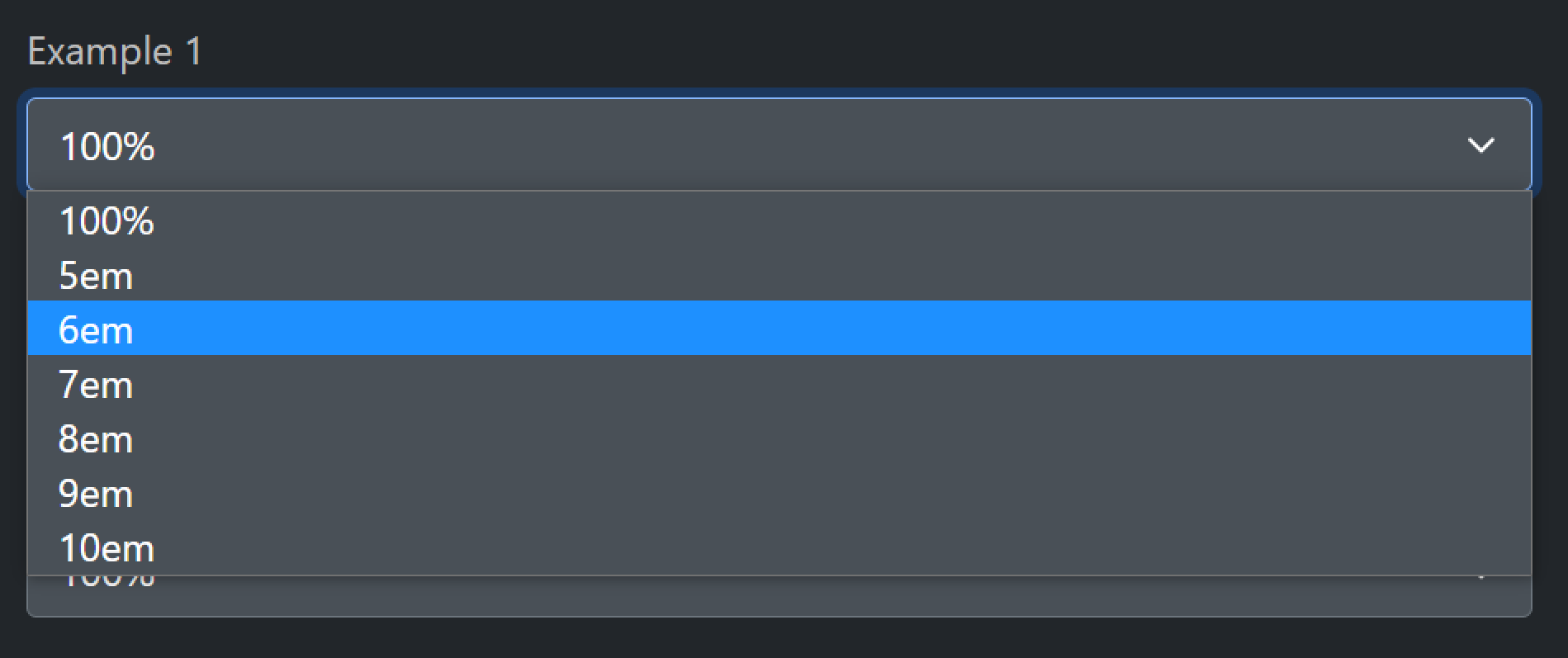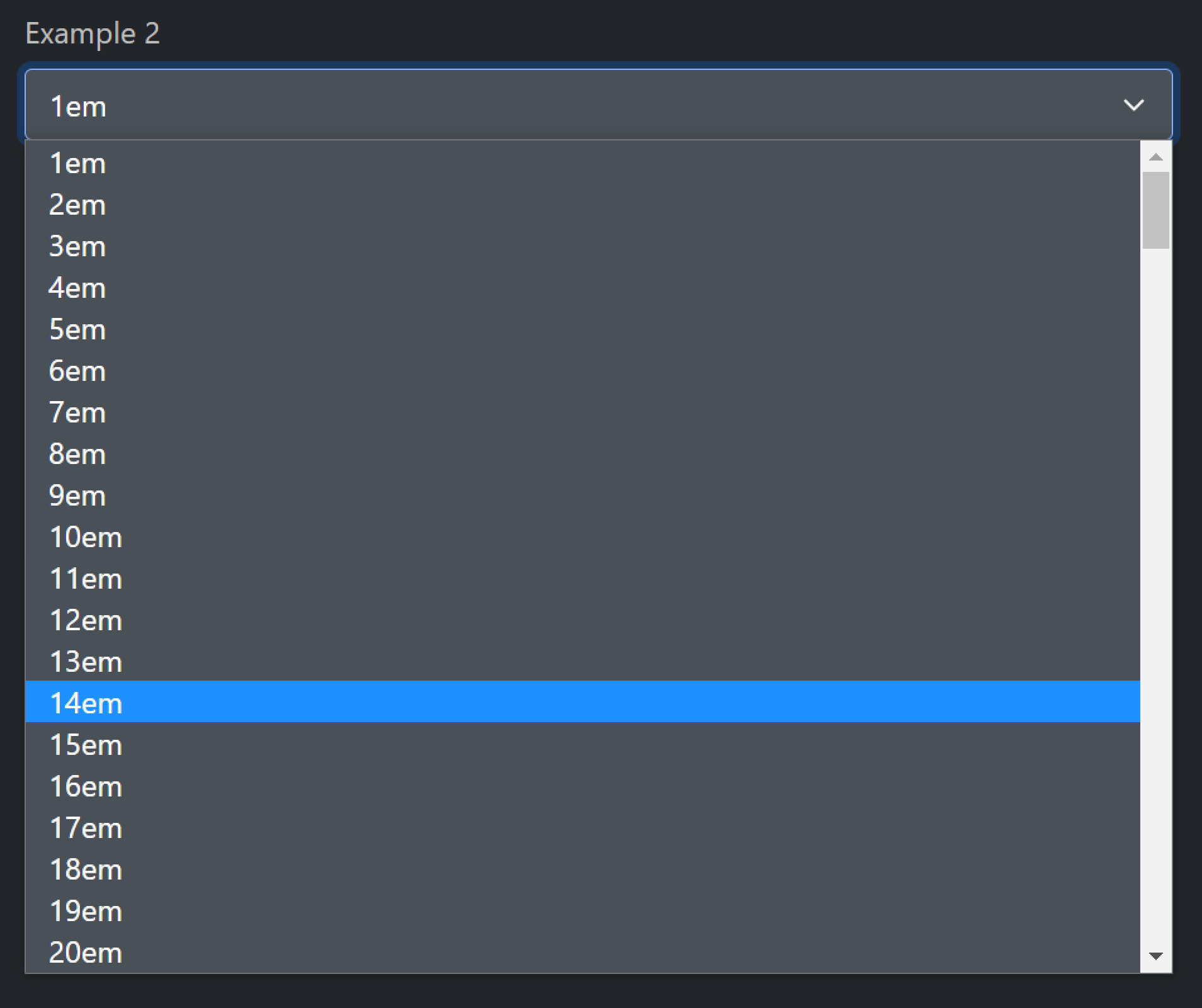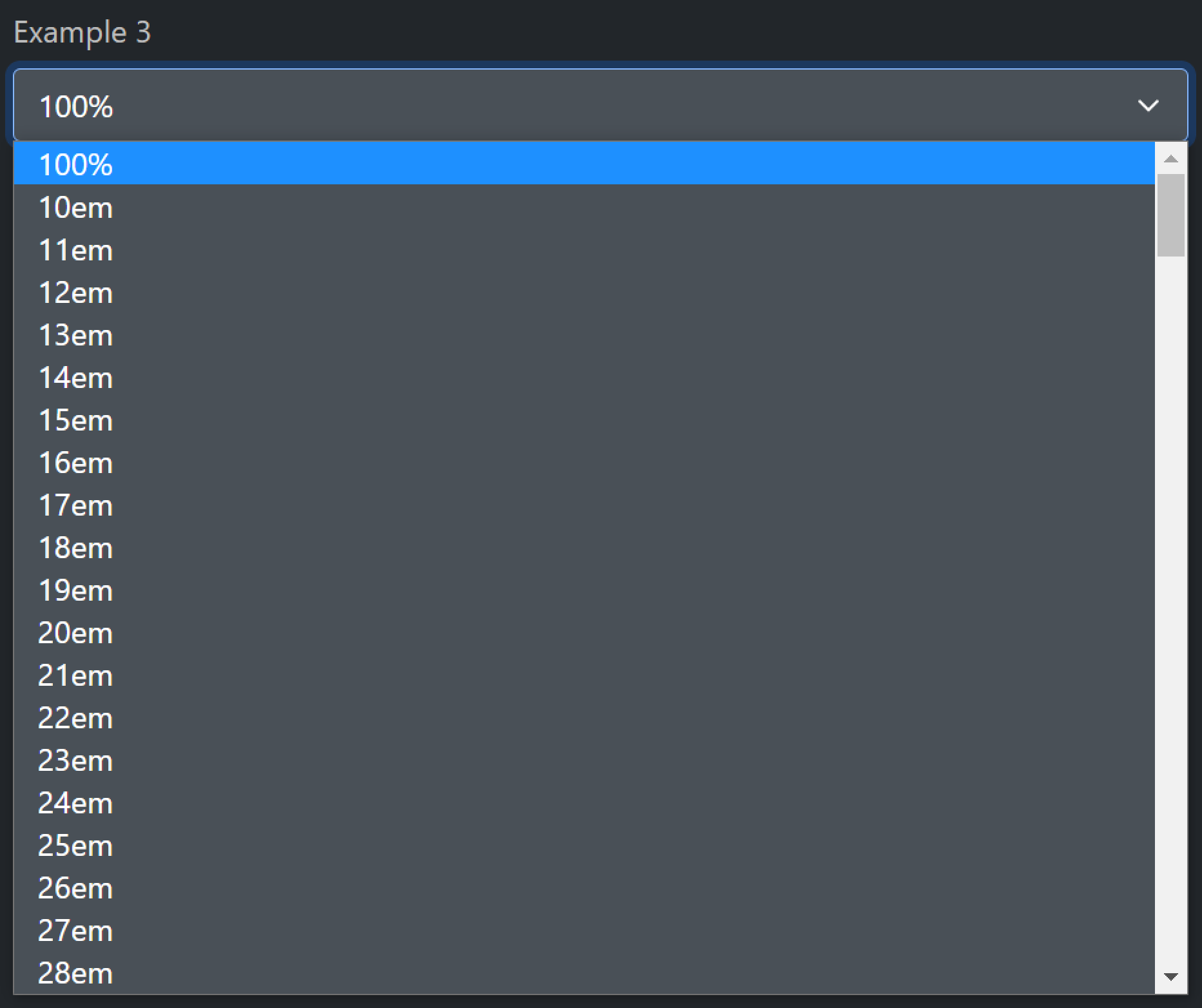Considering the number of views on this topic, I thought it might help others in giving some further examples of which the option you chose depends on the desired contents of the select list.
I usually prefer to keep the assignment of select dropdown options in a seperate class which is more manageble when creating longer lists, it's also handy to use the same class of optons for more common applications across the app.
C# Class
public class CustomFormsSelectDropdownParams
{
public static IEnumerable<SelectListItem> Example1ItemWidth { get; private set; }
public static IEnumerable<SelectListItem> Example2ItemWidth { get; private set; }
public static List<SelectListItem> Example3ItemWidth { get; private set; }
static CustomFormsSelectDropdownParams()
{
// ---------
// Exmaple 1
// ---------
// This is OK if you only have a
// relatively small amount of options to write.
Example1ItemWidth = new SelectListItem[]
{
// First item different to the remaining range.
new SelectListItem ("100%", "100%"),
new SelectListItem ("5em", "5em"),
new SelectListItem ("6em", "6em"),
new SelectListItem ("7em", "7em"),
new SelectListItem ("8em", "8em"),
new SelectListItem ("9em", "9em"),
new SelectListItem ("10em", "10em")
};
// ---------
// Exmaple 2
// ---------
// This is more practical if you have a large amount of options.
// NOTE: using this example doesnt allow us to insert any options
// that are different from the rest, so limited use cases may apply.
Example2ItemWidth = Enumerable.Range(1, 200).Select(x => new SelectListItem
{
Value = x.ToString() + "em",
Text = x.ToString() + "em",
});
// ---------
// Exmaple 3
// ---------
// This is more practical if you have a large amount of options.
// This example also allows us to add an option that is a different
// to the remaining options in the loop.
// Our first item is bespoke so created seperately.
var firstDefaultItem = new SelectListItem("100%", "100%");
// Provides a range between 10 --> 200em
var remainingItems = Enumerable.Range(10, 191).Select(x => new SelectListItem
{
Value = x.ToString() + "em",
Text = x.ToString() + "em",
});
Example3ItemWidth = new List<SelectListItem>();
// Add out first bespoke item.
Example3ItemWidth!.Add(firstDefaultItem);
// Add the remaining items in a loop.
foreach (var item in remainingItems)
{
Example3ItemWidth.Add(new SelectListItem(item.Text, item.Value));
}
}
}
Sample HTML Code:
<div class="container-fluid">
<div class="row">
<div class="mb-3 col-3" >
<label class="form-label">Example 1</label>
<select class="form-select" asp-items="Classes.CustomForms.CustomFormsSelectDropdownParams.Example1ItemWidth"></select>
</div>
</div>
<div class="row">
<div class="mb-3 col-3" >
<label class="form-label">Example 2</label>
<select class="form-select" asp-items="Classes.CustomForms.CustomFormsSelectDropdownParams.Example2ItemWidth"></select>
</div>
</div>
<div class="row">
<div class="mb-3 col-3" >
<label class="form-label">Example 3</label>
<select class="form-select" asp-items="Classes.CustomForms.CustomFormsSelectDropdownParams.Example3ItemWidth"></select>
</div>
</div>
</div>
All three select dropdowns on the page:
![enter image description here]()
Example 1:
![enter image description here]()
Example 2:
![enter image description here]()
Example 3:
![enter image description here]()
Example 3 was the one that had niggled me for a while, I wasnt sure how to create an select options list as well as adding some other bespoke options at the same time. If i need to to add some more additional besoke options then I would simply add them in what ever order I need, either before the loop, after or in between multiple loops.
 *screenshot of output
*screenshot of output 




@Html.DropDownListFor(m => m.StartPointProvince, (IEnumerable<SelectListItem>)ViewBag.Provinces)- omitSelectList lstProvinces = new SelectList(Provinces);.DropDownListFor()acceptsIEnumerable<SelectListItem>for the second parameter so its a bit pointless to create aSelectList(which isIEnumerable<SelectListItem>), and if you did it would need to benew SelectList(Provinces, "Value", "Text");but this is just unnecessay overhead – Readable